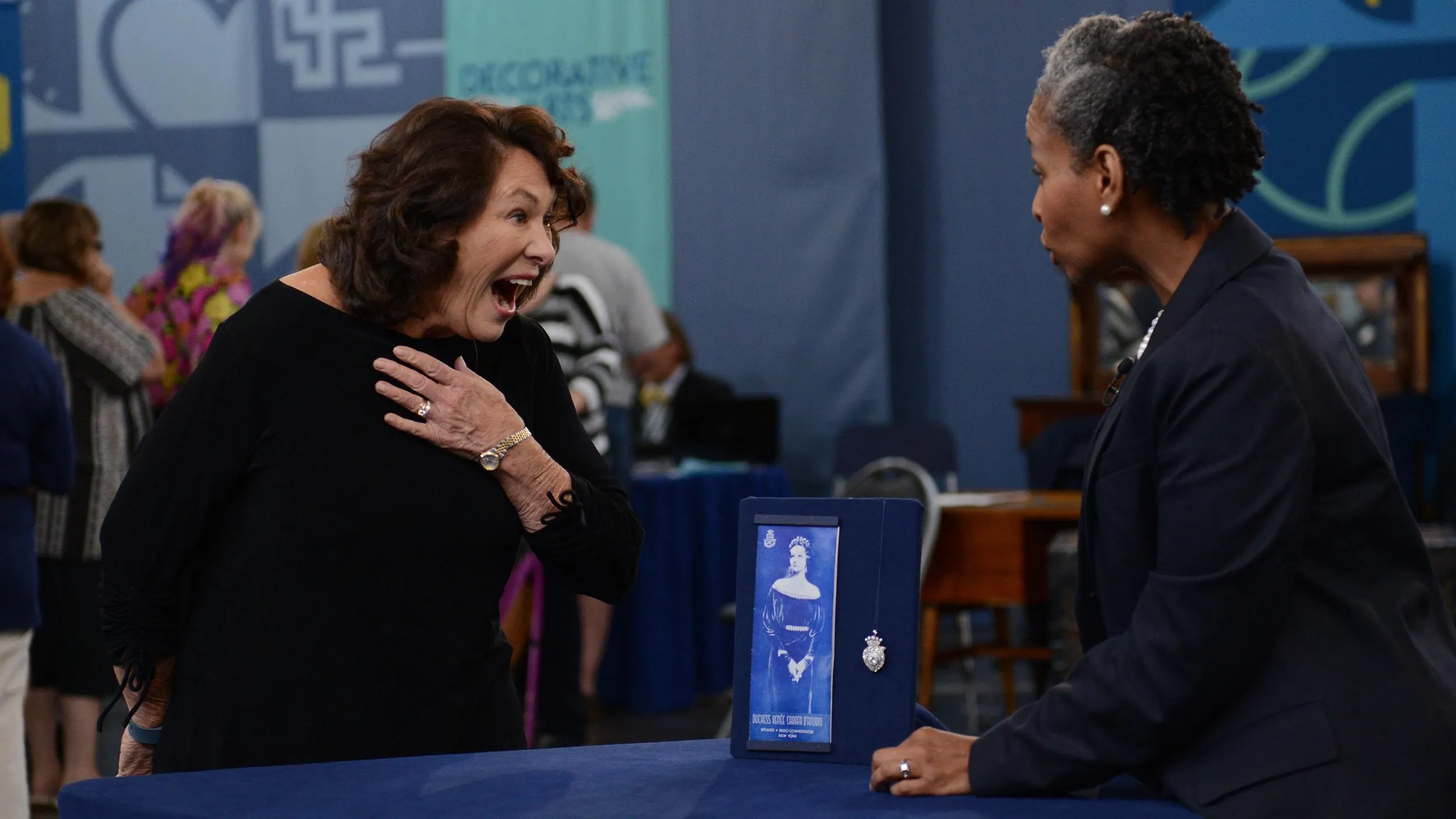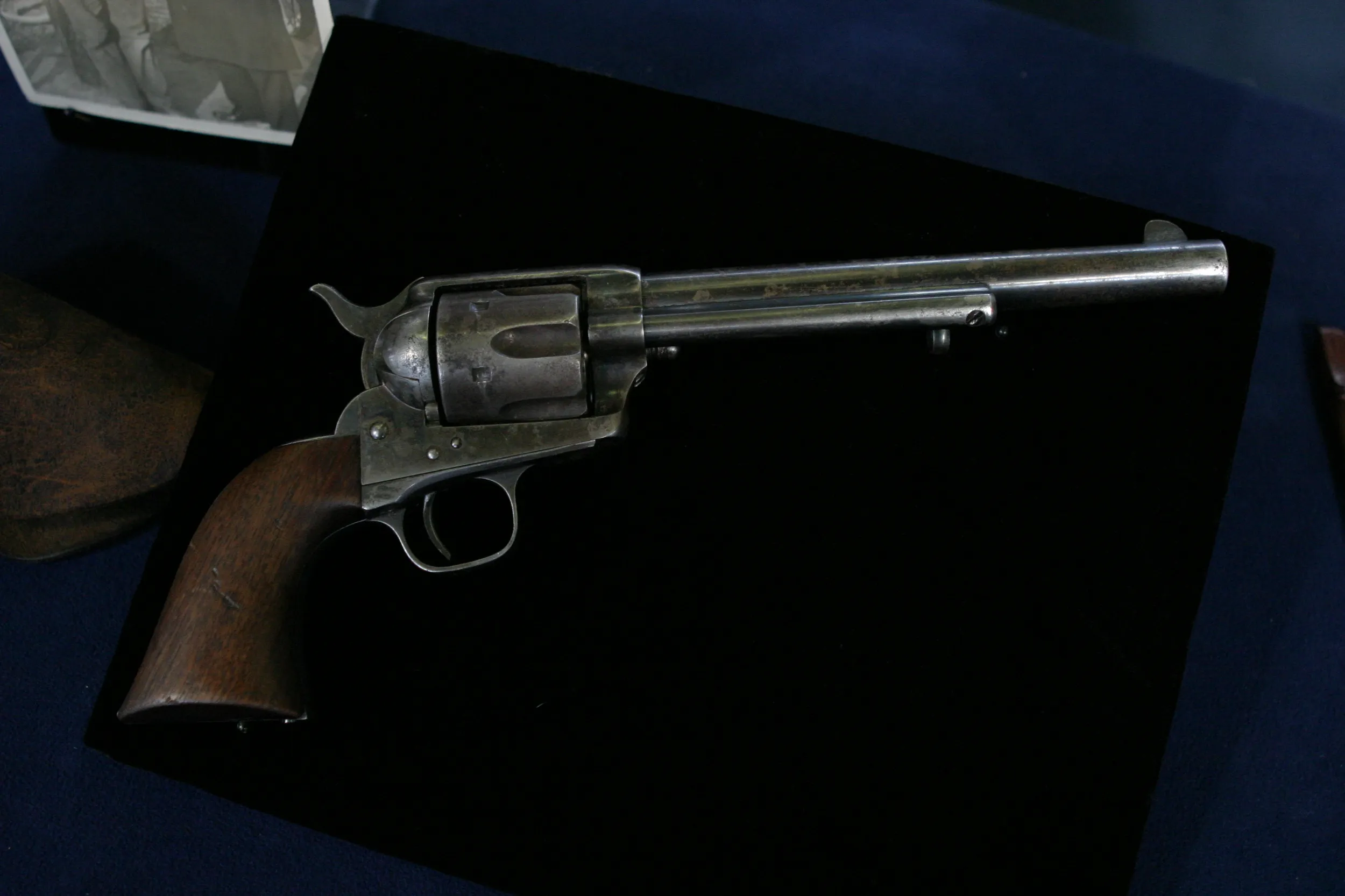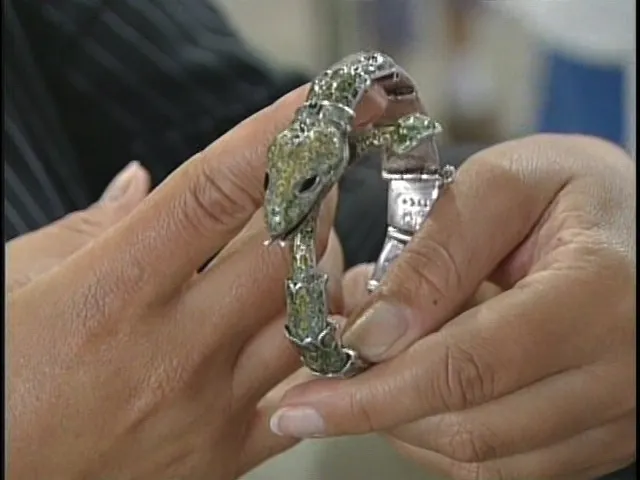GUEST: I brought in a clock, a French clock, so we were led to believe, and it's been in the family for as long as I can remember. Which... and I've been here 81 years, so I know it's got some age to it. It was my wife's aunt, who died about 50, 60 years ago. She'd be about 115 or 120 now if she was still
around, so we do know it's old. I used to let it run, but then it got to the point I got tired of winding it every week, so I just didn't wind it anymore.
APPRAISER: It is wind, and it does work.
GUEST: Yeah.
APPRAISER: Well, it is a French-made clock. These fall into the category of crystal regulators in America. In Europe they call them four-glass clocks. And this one sort of has an unusual presentation. The basic model is just a square or a rectangle with the dial behind the glass. And this example is what I would consider sort of a special model in that it has these curved sides, right, which are very unusual. In addition to that, the dial is out in front of the front panel of glass, and it has its own bezel to close up to protect the dial.
GUEST: Right, okay.
APPRAISER: Talking about the dial, the dial is enameled, or fire enameled. It's interesting in that it's decorated with floral wreath around the Roman numerals, and the numerals are blue. More often they're black. It also has that wonderful little brass insert in the center. So those would have all been little upcharges in terms of the decoration of the dial itself. The movement is pretty standard. You'll find this movement in the expensive versions, and you'll find it also in the basic versions. So what really differentiates one crystal regulator from the other is the presentation of the case. Now, some people would say that this case is a little over the top, in terms of having all those diamonds around the outside.
GUEST (chuckling): Diamonds.
APPRAISER: They're not actually diamonds—
GUEST: I know.
APPRAISER: they're actually cut glass or rhinestones.
GUEST: I figured that.
APPRAISER: But oftentimes people come in and say, "Look at this clock-- it's got wonderful diamonds all around it." Originally they would have been brilliant, but this clock is an old clock and hasn't been cleaned in a while.
GUEST: Mm-hmm.
APPRAISER: And as a result, they have sort of yellowed a little bit, which is a nice color for the patina of the rest of the case. The case retains much of its original gold or gilt wash, which you don't see very often. And that's an indication that you didn't dust it too aggressively over the last few years.
GUEST: My wife would like to hear that.
APPRAISER: That treatment is repeated on the pendulum, so it's consistent throughout. And it also has this wonderful brass applied banding around it. So we have the shape, which is unusual, and not only that, but that glass had to be molded to that shape. 1900 is the number that most people use for clocks of this series. They're made as early as the 1880s normally, and they make them up until 1910. This is really a special example. Now, the standard examples sell for $400 or $500 cleaned up today. They've come down a little bit because of the economy that we're in. This one I think would maintain most of its value from years past. If you were to replace this
clock and go into a retail shop to buy it, you probably would have to expect to write a check for somewhere in the neighborhood of $2,500 for it.
GUEST: Okay. I'll keep it.











